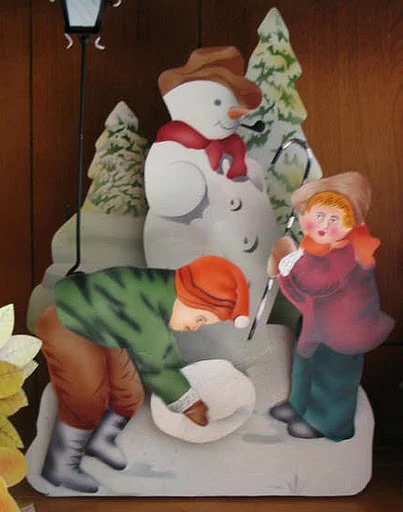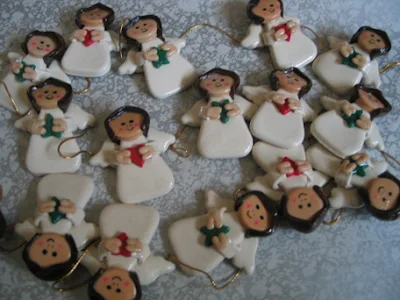Writing letters to Santa Claus has been a Christmas tradition for children for many years. These letters normally contain a wishlist of toys and assertions of good behavior. Some social scientists have found that boys and girls write different types of letters. Girls generally write longer but more polite lists and express the nature of Christmas more in their letters than in letters written by boys. Girls also more often request gifts for other people.
Many postal services allow children to send letters to Santa Claus. These letters may be answered by postal workers and/or outside volunteers. Writing letters to Santa Claus has the educational benefits of promoting literacy, computer literacy, and e-mail literacy. A letter to Santa is often a child's first experience of correspondence. Written and sent with the help of a parent or teacher, children learn about the structure of a letter, salutations, and the use of an address and postcode.
According to the Universal Postal Union (UPU)'s 2007 study and survey of national postal operations, the United States Postal Service (USPS) has the oldest Santa letter answering effort by a national postal system. The USPS Santa letter answering effort started in 1912 and since 1940 has been called "Operation Santa" to ensure that letters to Santa are adopted by charitable organizations, major corporations, local businesses and individuals in order to make children’s holiday dreams come true from coast to coast. Those seeking a North Pole holiday postmark through the USPS, are told to send their letter from Santa or a holiday greeting card by December 10 to: North Pole Holiday Postmark, Postmaster, 4141 Postmark Dr, Anchorage, AK 99530-9998.
In 2006, according to the UPU's 2007 study and survey of national postal operations, France's Postal Service received the most letters for Santa Claus or "Père Noël" with 1,220,000 letters received from 126 countries. France's Postal Service in 2007 specially recruited someone to answer the enormous volume of mail that was coming from Russia for Santa Claus.
Other interesting Santa letter processing information, according to the UPU's 2007 study and survey of national postal operations, are:
- Countries whose national postal operators answer letters to Santa and other end-of-year holiday figures, and the number of letters received in 2006: Germany (500,000), Australia (117,000), Austria (6,000), Bulgaria (500), Canada (1,060,000), Spain (232,000), United States (no figure, as statistics are not kept centrally), Finland (750,000), France (1,220,000), Great Britain (750,000), Ireland (100,000), New Zealand (110,000), Portugal (255,000), Poland (3,000), Slovakia (85,000), Sweden (150,000), Switzerland (17,863), Ukraine (5,019).
- In 2006, Finland's national postal operation received letters from 150 countries (representing 90% of the letters received), France's Postal Service from 126 countries, Germany from 80 countries, and Slovakia from 20 countries.
- Some national postal operators make it possible to send in e-mail messages which are answered by physical mail. All the same, Santa still receives far more letters than e-mail through the national postal operators, proving that children still write letters. National postal operators offering the ability to use an on-line web form (with or without a return e-mail address) to Santa and obtain a reply include Canada Post (on-line web request form in English and French), France's Postal Service (on-line web request form in French), and New Zealand Post (on-line web request form in English). In France, by 6 December 2010, a team of 60 postal elves had sent out reply cards in response to 80,000 e-mail on-line request forms and more tna 500,000 physical letters.
Canada Post has a special postal code for letters to Santa Claus, and since 1982 over 13,000 Canadian postal workers have volunteered to write responses. His address is: Santa Claus, North Pole, Canada, H0H 0H0 (see also: Ho ho ho). (This postal code, in which zeroes are used for the letter "O" is consistent with the alternating letter-number format of all Canadian postal codes.) Sometimes children's charities answer letters in poor communities, or from children's hospitals, and give them presents they would not otherwise receive. In 2009, 1,000 workers answered 1.1 million letters and 39,500 e-mail on-line request forms from children in 30 different languages, including Braille.
In Britain it was traditional for some to burn the Christmas letters on the fire so that they would be magically transported by the wind to the North Pole. However this has been found to be less efficient than the use of the normal postal service, and this tradition is dying out in modern times, especially with few homes having open fires in their homes. Recently the national postal service Royal Mail has extended its delivery service to include Santa Claus' address, and allocated it a postcode. In 2010 the full address is: Santa Claus, Reindeer Land, SAN TA1.
In Mexico and other Latin American countries, besides using the mail, sometimes children wrap their letters to a small helium balloon, releasing them into the air so Santa magically receives them.
In 2010, the Brazilian National Post Service, “Correios” formed partnerships with public schools and social institutions to encourage children to write letters and make use of postcodes and stamps. In 2009, the Brazilian National Post Service, “Correios” answered almost two million children's letters, and spread some seasonal cheer by donating 414,000 Christmas gifts to some of Brazil's neediest citizens.
Through the years, the Finnish Santa Claus (Joulupukki or "Yule Goat") has received over eight million letters. He receives over 600,000 letters every year from over 198 different countries with Togo being the most recent country added to the list. Children from Great Britain, Poland and Japan are the busiest writers. The Finnish Santa Claus lives in Korvatunturi, however the Santa Claus Main Post Office is situated in Rovaniemi near the Arctic circle. His address is: Santa Claus’ Main Post Office, Santa’s Workshop Village, FIN-96930 Arctic Circle. The post office welcomes 300,000 visitor a year, with 70,000 visitors in December alone.
Children can also receive a letter from Santa through a variety of private agencies and organizations, and on occasion public and private cooperative ventures. An example of a public and private cooperative venture is the opportunity for expatriate and local children and parents to receive postmarked mail and greeting cards from Santa during December in the Finnish Embassy in Beijing, People's Republic of China, Santa Claus Village in Rovaniemi, Finland, and the People's Republic of China Postal System's Beijing International Post Office. Parents can order a personalized "Santa letter" to be sent to their child, often with a North Pole postmark. The "Santa Letter" market generally relies on the internet as a medium for ordering such letters rather than retail stores.
Need Santa To Write A Letter or Vice Versa, Visit Santa Workshops in Finland: Operation Santa Claus * A Letter From Santa * Free Letters From Santa Claus * Christmas Rovaniemi * Santa's Greeting from The Arctic Circle * Letter to Santa from The Lapland * Snow Village * Snowland Restaurant * Santa Park * Old-fashioned Christmas Fun Finland * Letters by Santa.com * Personalized Letter From Santa Claus * Santa Letter
When my little ones were young, they wrote their letters to Santa and then "mailed" them by burning the letters in the fireplace. The ashes would make their way up the chimney with the smoke to Santa's workshop. This is not a particularly common practice in America, but it was the tradition practiced by my husband in his childhood and so we continued with it.
I've cleaned these vintage postcards for those of you who would like to print it out and leave a letter for Santa with cookies on Christmas Eve. My husband and I saved all of our children's Thank You notes to Santa over the years and these are so much fun to read. I recommend this marvelous little tradition because it teaches children to practice curtsy. Sometimes, Santa even remembered to write a return letter to them after leaving their gifts!
Read the our Terms of Use before downloading and printing the graphics below.
Read the our Terms of Use before downloading and printing the graphics below.

























